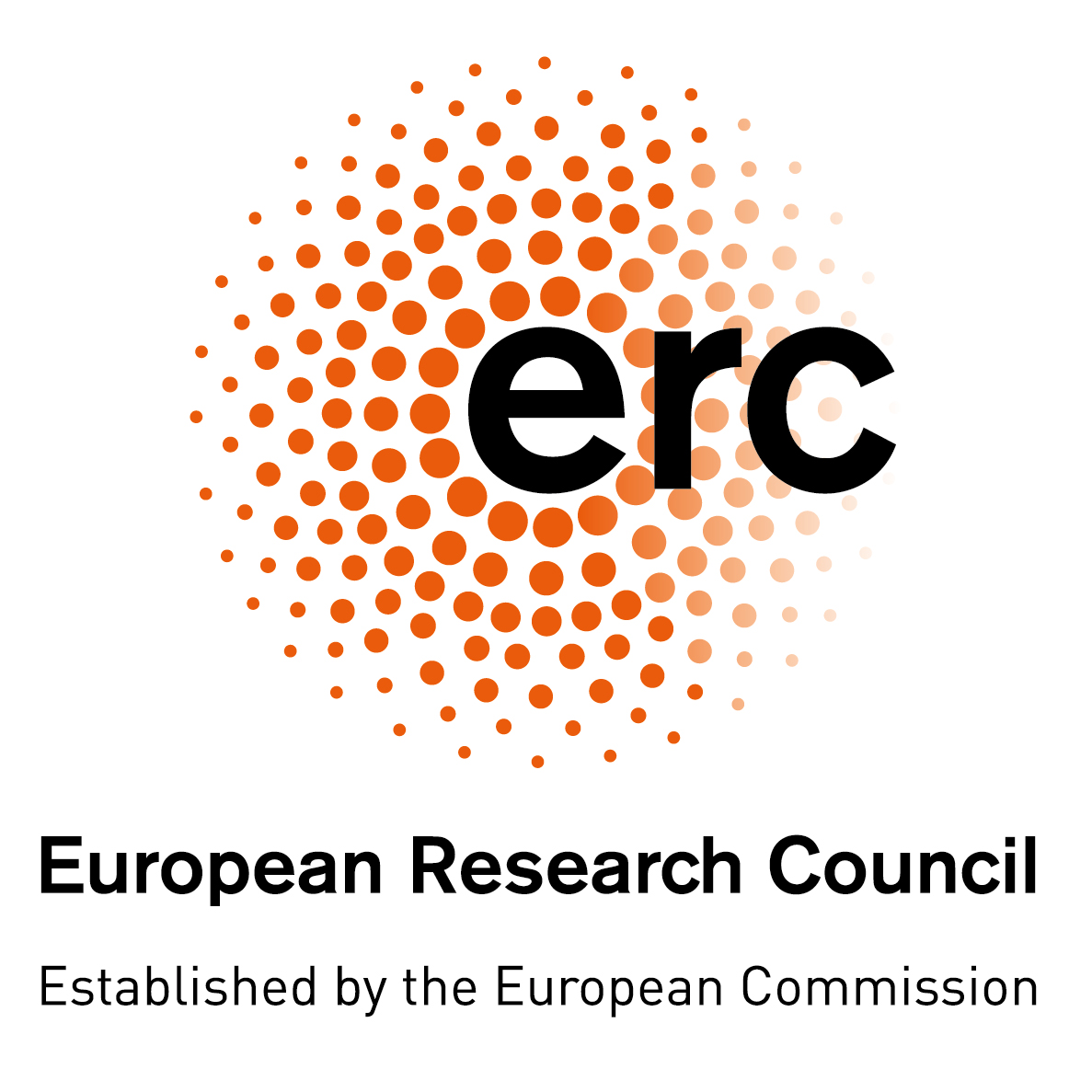Simulating cities with streaming (big?) data and agent-based modelling
Nick Malleson, Jonathan A. Ward, Alison Heppenstall, Michael Adcock, Daniel Tang, Jonathan Coello, Tomas Crols and Minh Kieu
Leeds Institute for Data Analytics (University of Leeds), Improbable and the Alan Turing Institute
dust.leeds.ac.uk
These slides and abstract: https://urban-analytics.github.io/dust/presentations.html
How many people are there in the city centre?
We need to better understand urban flows:
Crime – how many possible victims?
Pollution – who is being exposed? Where are the hotspots?
Economy – can we attract more people to our city centre?
Health – can we encourage more active travel?
More broadly: Understanding urban dynamics
Outline
City simulation with agent-based modelling
A problem with applying ABM to urban simulation
Examples:
Incorporating real time (big?) data
Modelling dynamic commuting behaviour

City Simulation with Agent-Based Modelling
Systems are driven by individuals
(cars, people, ants, trees, whatever)
Autonomous, interacting agents
Represent individuals or groups
Situated in a virtual environment
Bottom-up modelling
Account for system behaviour directly
City Simulation with Agent-Based Modelling
Problem: diverse data that describe urban dynamics
Payment/loyalty cards, transport smart cards, mobile phone interactions, footfall/traffic counters, etc., etc.
How to combine to create a holistic representation
Solution: build an agent-based model
Implement virtual 'people' (agents)
Optimise different aspects using all available data
Problem: Models diverge from reality
Cities are complex
Human behaviour is difficult to predict
A model will quickly diverge from reality
We need a way to assimilate up to date data into models...
Dynamic Data Assimilation
Used in meteorology and hydrology to constrain models closer to reality.
Try to improve estimates of the true system state by combining:
Noisy, real-world observations
Model estimates of the system state
Should be more accurate than data / observations in isolation.
Ensemble Kalman Filter (EnKF)


Current Question:
How much data are needed to successfully model a (pedestrian) system?
Example: Crowds in a train station
How much data do we need?
Counts of people entering?
Cameras at various points in the concourse?
Full traces of all individuals?
Collaboration with Improbable
Approach: probabilistic modelling
Using cutting-edge probabilistic programming library, under development by Improbable
Model parameters expressed as probability distributions
No crowding With crowding
Model Output
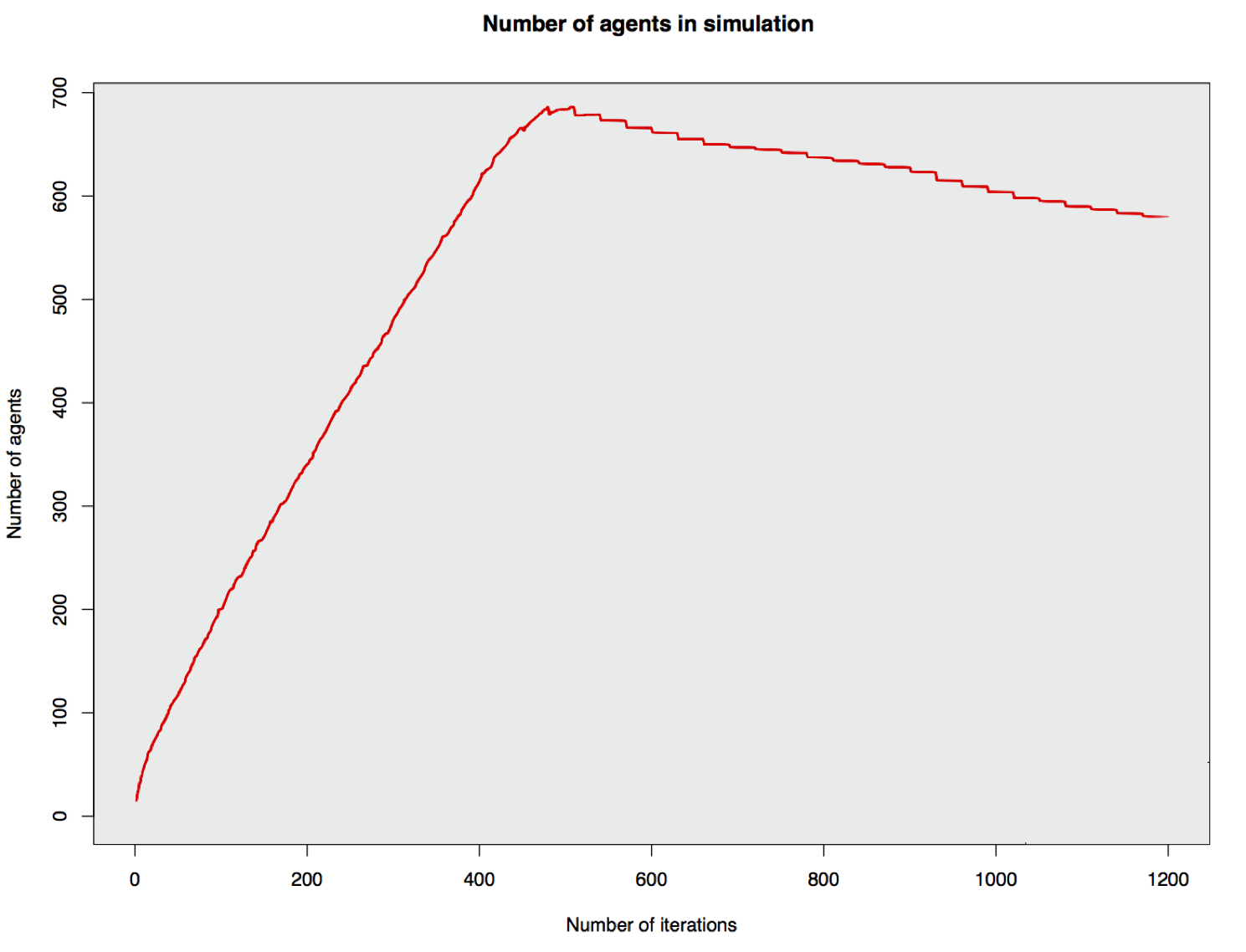
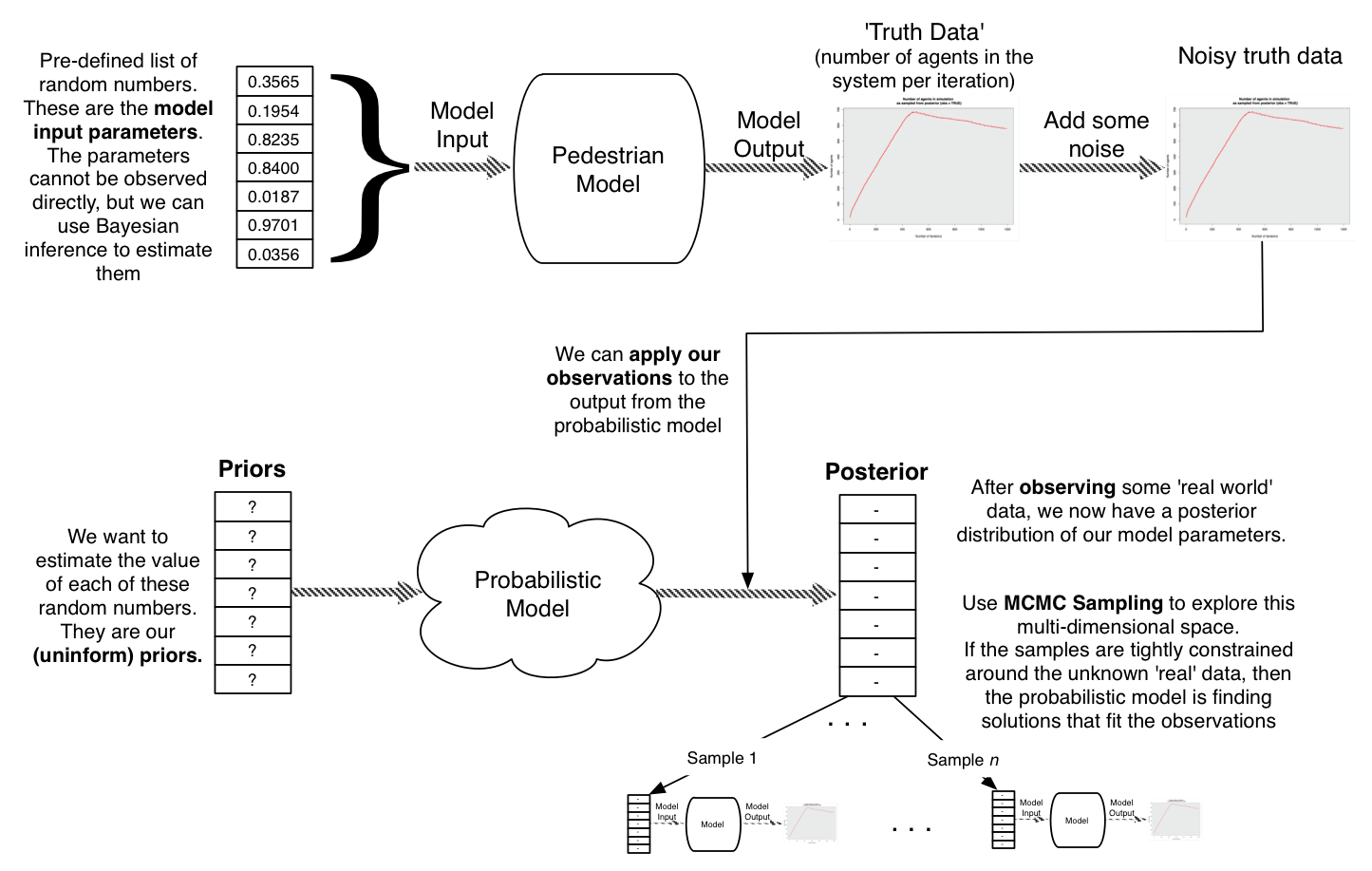
Results: Sampling the posterior with and without observations
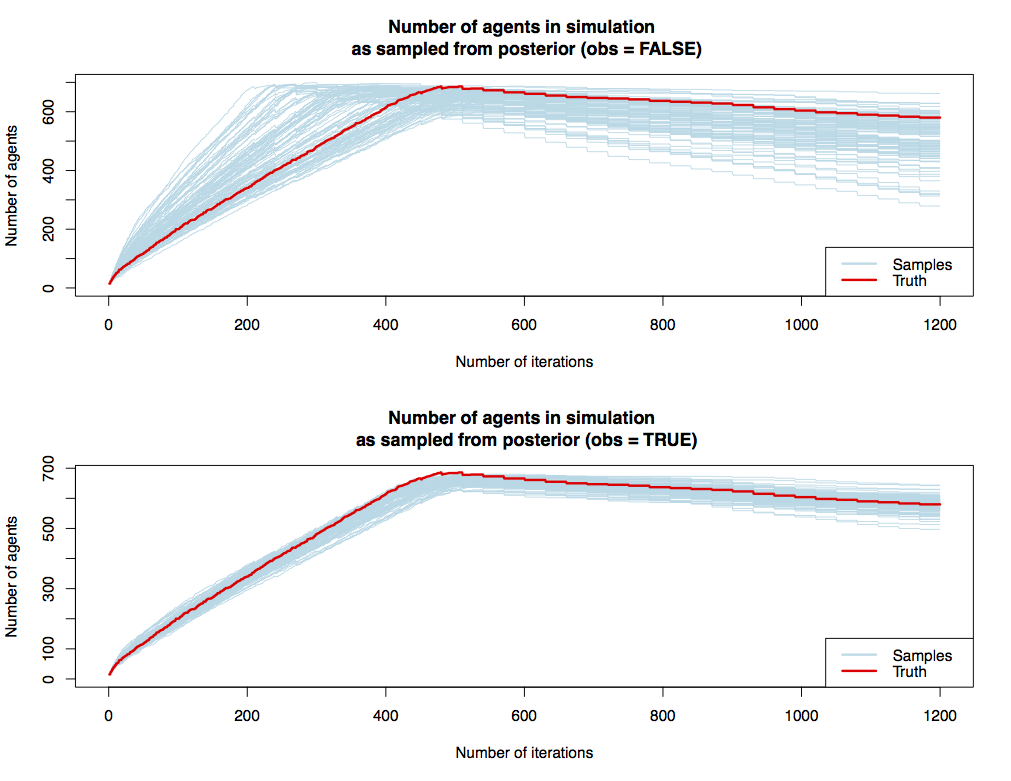
Immediate Next Steps

Experiment with different types of observations, e.g.
Cameras that count the passers-by in a single place
Full traces of all agents
Basically: how much do we need to find solutions that fit the observations
Move towards data assimilation (actually adjust the state of the model while it is running in response to external data).
Then: apply to a real urban system
Simulating Urban Flows (surf)

3 year research project funded by the UK ESRC
Modelling a small town, using real footfall counters
Ultimately stream real-time data into the model dynamically
Modelling Footfall
Wi-Fi footfall counters (Noggin, CDRC). Case study: Otley, West Yorkshire
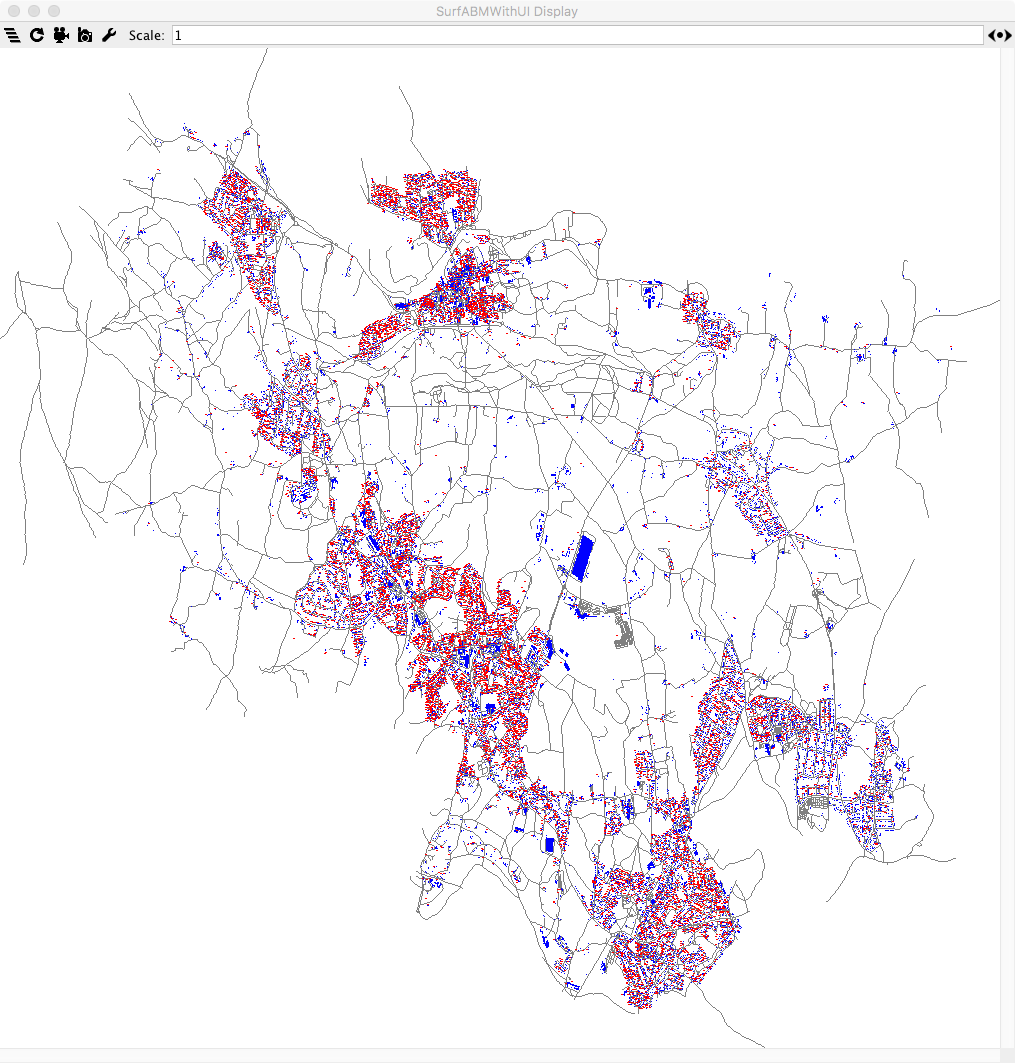
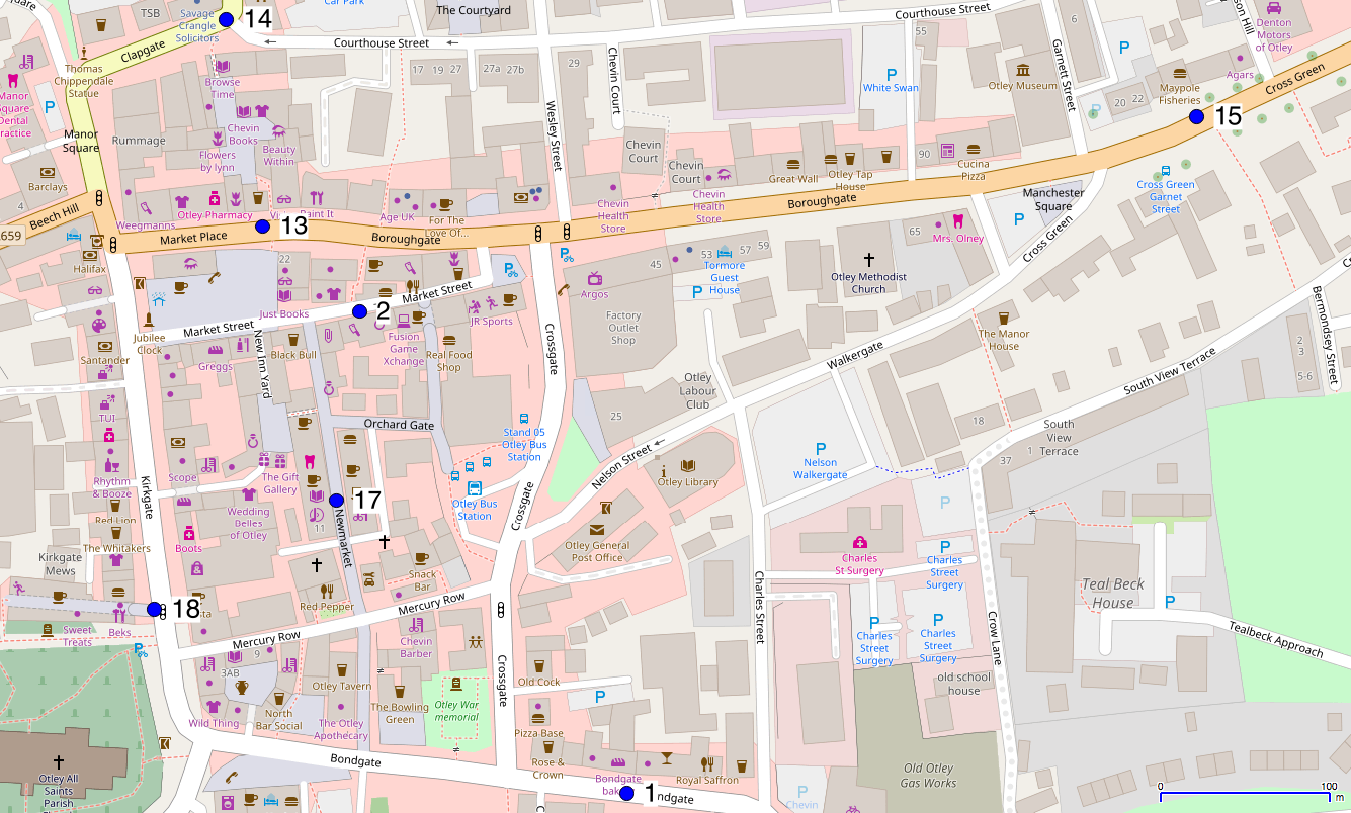
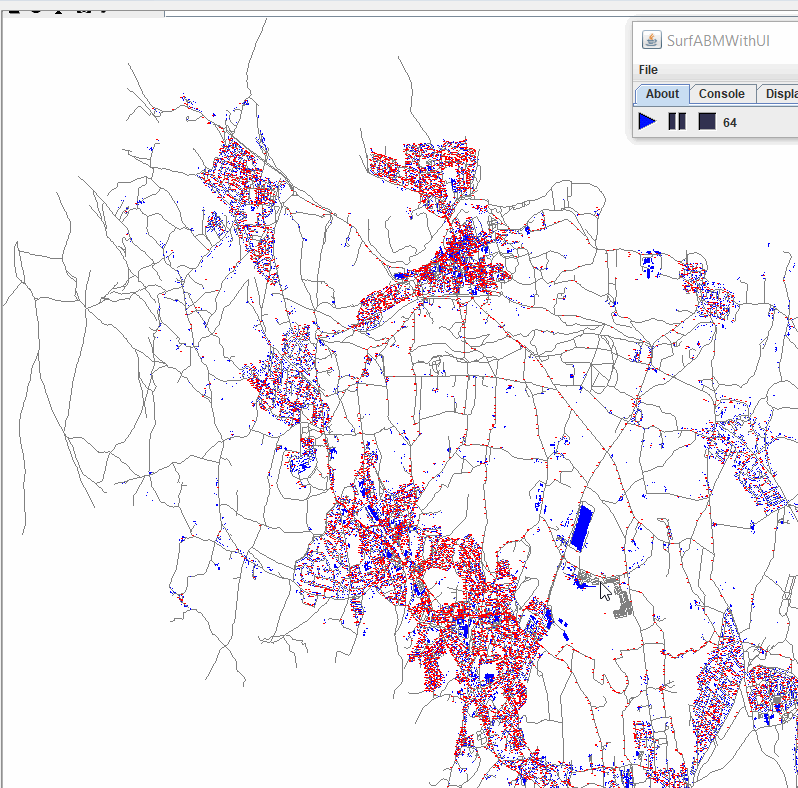
Modelling Footfall
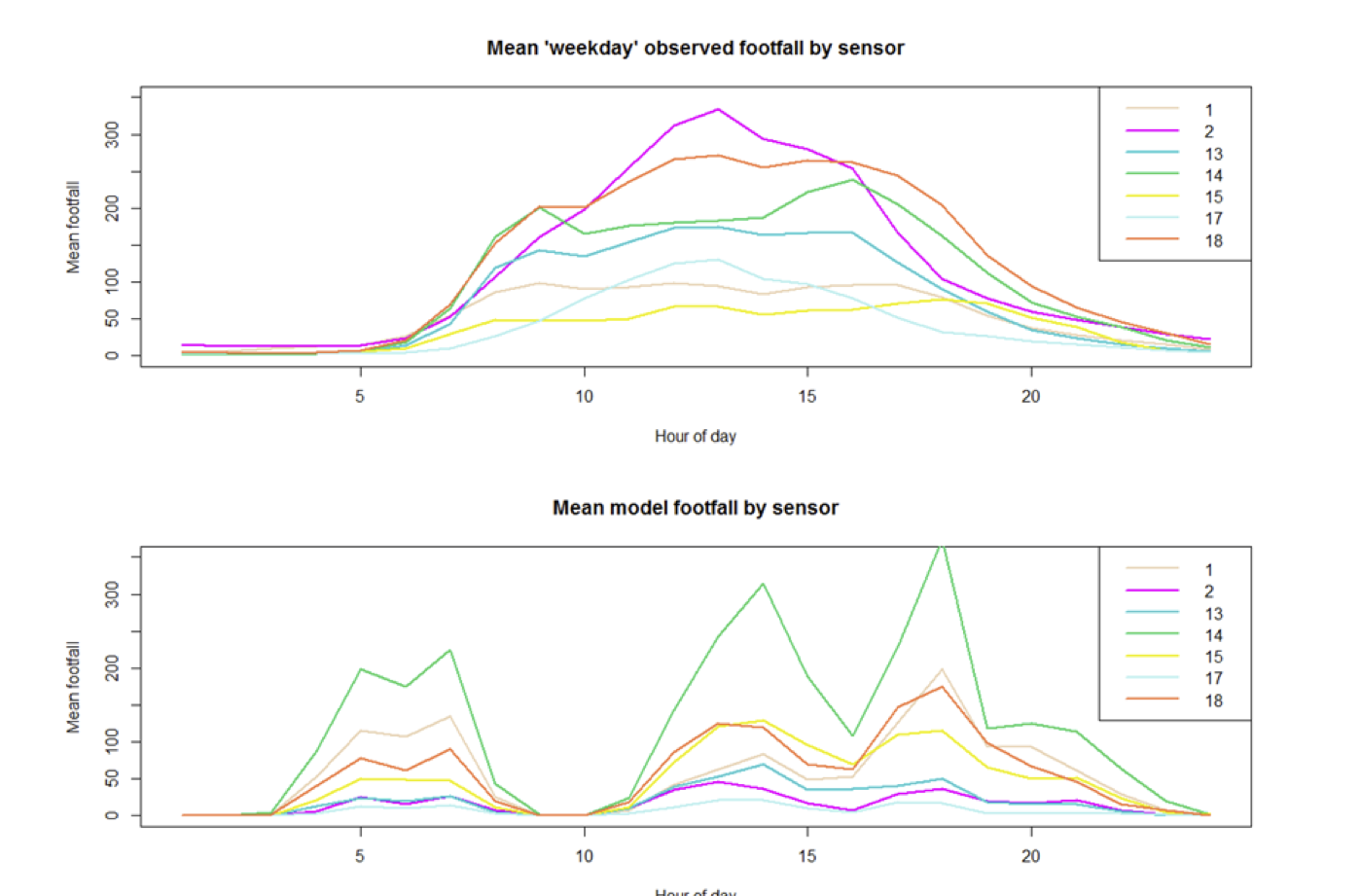
Opportunity: Fully-Funded PhD Scholarship (Leeds, UK)
Agent-Based Modelling of Smart Cities
Start: October 2018
Fully-funded (fees and stipend) for four years
Available to UK/EU applicants
Conclusion
Overall aim: simulating cities using streams of (real time) data
We want to be able to simulate cities, assimilating real time 'smart city' data as they emerge to reduce uncertainty (and prevent divergence).
Current goals:
Better handle on uncertainty in our models;
Trial surrogate models to reduce computational complexity (especially in ensembles);
Incorporate real time data into the model.
Simulating cities with streaming (big?) data and agent-based modelling
Nick Malleson, Jonathan A. Ward, Alison Heppenstall, Michael Adcock, Daniel Tang, Jonathan Coello, Tomas Crols and Minh Kieu
Leeds Institute for Data Analytics (University of Leeds), Improbable and the Alan Turing Institute
dust.leeds.ac.uk
These slides and abstract: https://urban-analytics.github.io/dust/presentations.html
